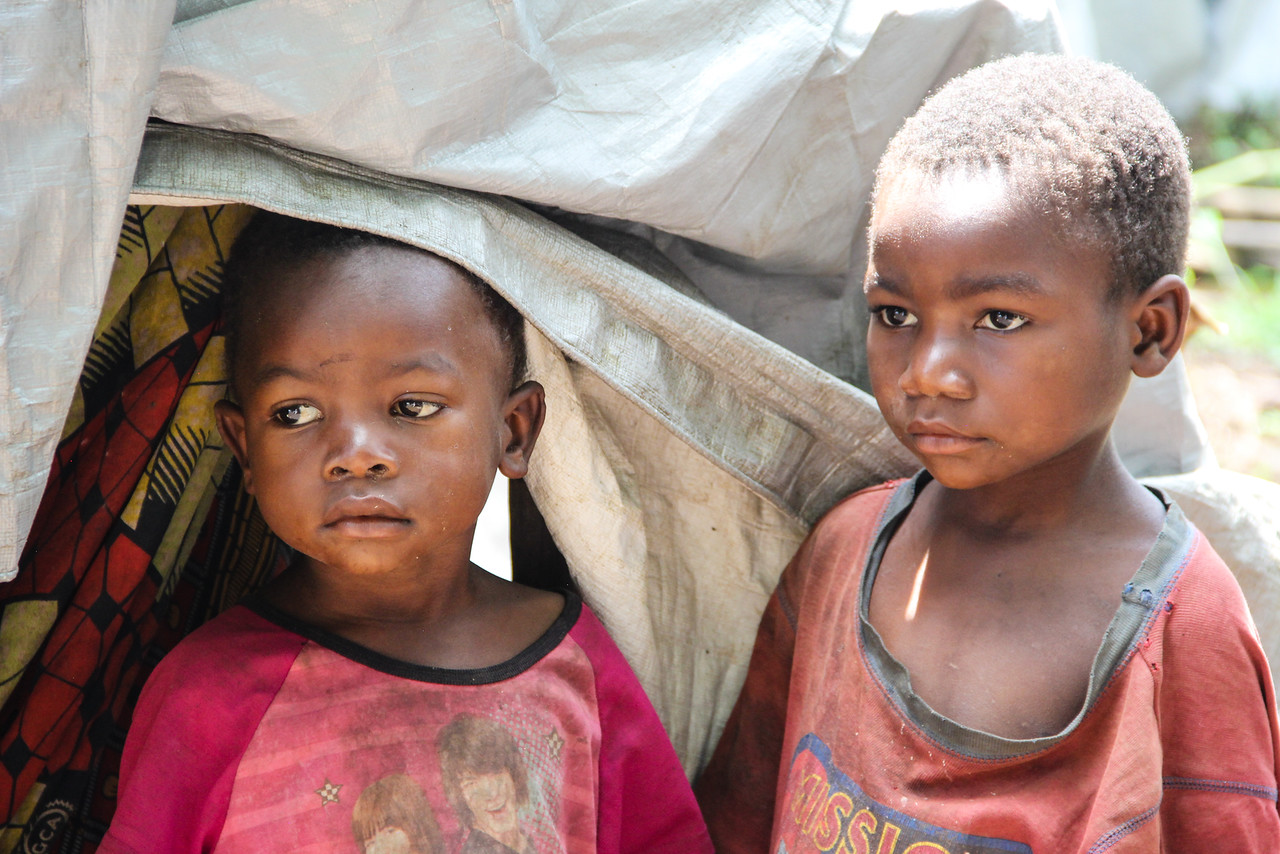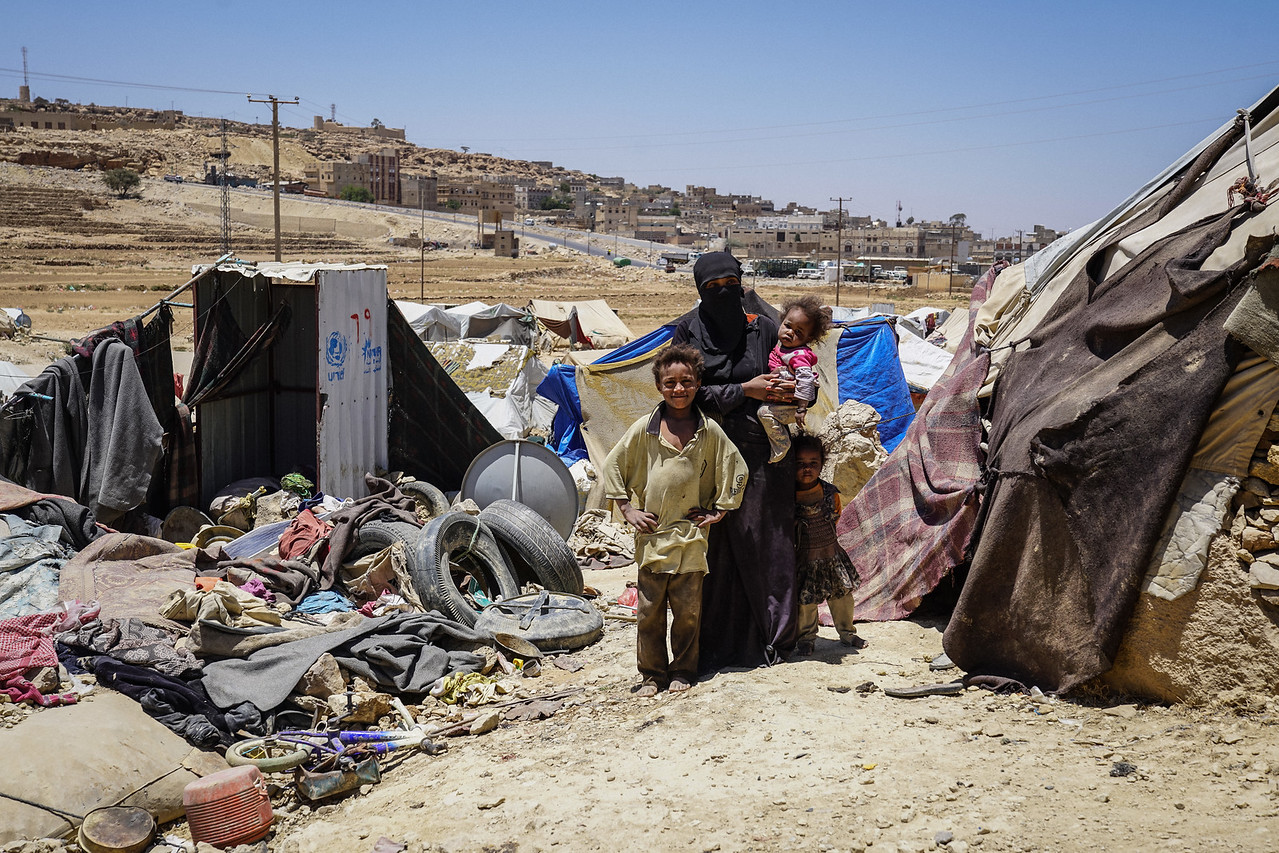
Title
Internal Displacement
Title
Internal DisplacementInternally displaced persons (IDPs) are people who are forced to flee their homes due to armed conflict, generalized violence, violations of human rights, or natural or human-made disasters, but who remain within their own country.
Some 40.5 million new people became internally displaced by conflict and disasters worldwide during the course of 2020. Of these people, 30.7 million were displaced by violence and conflict, and 9.8 million by natural disasters. In total, there were more than 55 million IDPs worldwide as of 31 December 2020, the highest number ever recorded.
The top three countries with the largest internally displaced populations due to conflict and violence in 2020 were the Democratic Republic of the Congo, Syria and Ethiopia, as in previous years. Violence and conflict continued to drive displacement in the Sahel, particularly in Burkina Faso, and reached unprecedented levels in Mozambique.
The top three countries with the largest number of IDPs due to disasters in 2020 were China, the Philippines and Bangladesh. The overlapping effects of conflict and climate change as drivers of displacement continued to rise, as 95 per cent of new conflict displacements in 2020 occurred in countries vulnerable to climate change.
20th anniversary of the Guiding Principles
In 1998, the Guiding Principles on Internal Displacement (henceforth the Guiding Principles) were presented to the UN Commission on Human Rights, forming the foundation for a normative framework on addressing the needs of IDPs. They restate, in explicit terms, the rights of IDPs that are implicit in existing international human rights and humanitarian law. They address protection against displacement, as well as protection during displacement and return to places of origin, providing especially for humanitarian assistance and the resettlement and integration of IDPs into host communities.
Though not legally binding, the Guiding Principles have attained significant authority since their inception. At the September 2005 World Summit in New York, assembled Heads of State and Governments recognized the Guiding Principles as “an important international framework for the protection of internally displaced persons” (GA resolution 60/L.1, 132, UN document A/60/L.1).
In 2017, against the background of the approaching twentieth anniversary of the Guiding Principles the following year, the UN General Assembly, in its biannual resolution on IDPs, called on States, UN entities, the Special Rapporteur on the Human Rights of Internally Displaced Persons, regional organizations, national human rights institutions, non-governmental organizations (NGOs) and other stakeholders to mark the event in 2018.
Following the resolution, a three-year Plan of Action for Advancing Prevention, Protection, and Solutions for Internally Displaced People was launched in 2018. This multi-stakeholder plan of action successfully supported country-level initiatives on internal displacement around four priorities: increasing the participation of IDPs in the processes that affect them; supporting states to develop laws and policies on internal displacement; improving data and analysis on internal displacement; and the response to protracted situations of internal displacement, implementing durable solutions.
Following the conclusion of the Plan of Action, and building on the momentum to address internal displacement, GP20 organizations are continuing to collaborate under the GP2.0 initiative, which is co-chaired by OCHA, the International Organization for Migration (IOM), the UN Development Programme (UNDP) and the UN Refugee Agency (UNHCR). This community of experts serves as an informal platform for joint initiatives and events, as well as for sharing of information and good practices on internal displacement.
Complexities of internal displacement
 Armed conflict and insecurity in the Democratic Republic of the Congo have created one of the world’s most protracted and complex protection and displacement crises. © OCHA/N. Frerotte
Armed conflict and insecurity in the Democratic Republic of the Congo have created one of the world’s most protracted and complex protection and displacement crises. © OCHA/N. Frerotte
Internal displacement is a complex issue to address, due in part to the following factors:
- It is often politically and logistically challenging to provide humanitarian assistance to IDPs. A majority of them do not live in camps, but are dispersed among local communities, making it difficult to identify IDP populations and their needs. IDPs may also be inaccessible to humanitarian organizations due to factors such as their fear of being identified by authorities, or their continuous movement from place to place.
- Displacement has a particularly traumatic impact on children, often placing them in high-risk circumstances that put them in need of specific protection measures. Women and girls are particularly exposed to the risk of sexual violence while many internally displaced children lose access to education, and many are also or forced recruitment into armed groups.
- Context-specific factors can significantly affect the success of interventions for IDPs. These include the capacity and willingness of national and local institutions to receive aid for IDPs or the accessibility of legal and protective institutions, and factors specific to the internally displaced population, such as the resources and social capital of the displaced, or the presence of pre-existing vulnerabilities.
Addressing internal displacement
Internal displacement is often a protracted situation – many people remain in limbo for years in IDP camps, urban slums, or other areas of refuge. Most protracted displacement is due to prolonged or frozen conflicts that have not yet reached a political solution – this is also often accompanied by a lack of alignment between broader development frameworks and specific plans for internal displacement solutions. Lacking a permanent home or sustainable livelihoods, they often have little prospect of reaching a durable solution. Durable solutions for IDPs can be achieved through:
- Settling elsewhere in the country;
- Integrating into the community where they are currently based; and
- Returning home.
These solutions are detailed in the Inter-Agency Standing Committee (IASC) Framework on Durable Solutions for Internally Displaced Persons.
National Governments bear the primary responsibility for IDP protection and welfare. If national Governments are unable or unwilling to meet their responsibilities, the international community has a role to play in promoting and reinforcing efforts to ensure protection, assistance and solutions for IDPs.
However, the international community cannot address internal displacement through short-term humanitarian assistance alone, which often fosters dependence and has proven to be inadequate, unsustainable, and unsuited to the protracted nature of many IDP crises.
As such, a fundamental shift in focus is under way, based on the recognition that achieving durable solutions requires coordinated efforts among humanitarian, development and, where relevant, peace actors to support IDPs themselves in finding long-term solutions for their displacement. This strategy aims to promote the preservation of dignity, encourage self-reliance, support livelihoods, and improve opportunities for those displaced.
By working together, humanitarian and development institutions will be able to meet immediate needs, while developing sustainable outcomes for both IDP and host communities. There must be better humanitarian-development cooperation for sustainable results on the ground.
The role of the United Nations in addressing internal displacement
 A family stands in front of their tent in an IDP settlement in Khamir, some 100 km north of the Yemeni capital, Sana'a. © OCHA/Giles Clarke
A family stands in front of their tent in an IDP settlement in Khamir, some 100 km north of the Yemeni capital, Sana'a. © OCHA/Giles Clarke
In 1997, the Secretary-General presented an agenda for UN reform, which included the consolidation of the role of the Emergency Relief Coordinator (ERC) – including with regard to internal displacement. Since the introduction of this agenda, the UN’s Third Committee has regularly highlighted the “central role of the ERC for the coordination of, protection of and assistance to” IDPs (A/RES/70/165). This aspect of the ERC’s mandate is particularly important, as no single UN agency is formally responsible for IDPs.
UNHCR, UNDP and IOM, as well as many NGOs, have an essential role in providing assistance and protection to IDPs in a variety of contexts. Operationally, UNHCR – as the Global Protection Cluster lead – has spearheaded the protection of conflict-affected IDPs.
The Resident Coordinator for a country, who is generally designated as its Humanitarian Coordinator (RC/HC) during a humanitarian crisis, has an important role to play in ensuring a comprehensive humanitarian response to internal displacement. The Internal Displacement Monitoring Centre (IDMC) and the Joint IDP Profiling Service (JIPS) both provide crucial expertise and data on situations of internal displacement. The Special Rapporteur on the Human Rights of IDPs works to promote the human rights of IDPs within the UN system, and conducts advocacy with Governments and key stakeholders.
OCHA works in close partnership with Security Council bodies, UN agencies, the Special Rapporteur on the Human Rights of IDPs, NGOs and UN Secretariat entities to promote the protection and assistance of IDPs.
A new approach to protracted internal displacement
The UN Secretary-General’s Agenda for Humanity, introduced in 2016 at the World Humanitarian Summit, frames forced displacement as a development issue, setting the addressing of internal displacement as a long-term commitment.
The 2030 Agenda for Sustainable Development also promises to “leave no one behind”. It incorporates internal displacement issues into its 17 Sustainable Development Goals (SDGs), specifically including IDPs as a vulnerable group that must not be left behind.
In 2017, OCHA published a study addressing the issue of protracted internal displacement. This study, ‘Breaking the Impasse: Reducing Protracted Internal Displacement as a Collective Outcome’, recommends early development of self-sufficiency in protracted situations and strengthening of cooperation across the humanitarian, development and political divides. The study proposes a methodology to achieve collective outcomes that address protracted internal displacement and prevent new displacement situations from becoming long-term crises. In 2019, OCHA published ‘Reducing Protracted Internal Displacement: A Snapshot of Successful Humanitarian-Development Initiatives’, a companion piece showcasing successful humanitarian-development projects that have improved the lives of IDPs. In 2020, OCHA, with its partners, supported the launching of the GP20 Compilation of National Practices to Prevent, Address and find Durable Solutions to Internal Displacement, a study that highlights country-level practices and provides an overview of key lessons learned.
In June 2020, the UN Secretary-General launched a Policy Brief on COVID-19 and People on the Move, which highlighted the disproportional vulnerabilities of internally displaced persons as well as refugees and migrants to the COVID-19 pandemic and outlined a comprehensive agenda to address these vulnerabilities, centred around the notion of inclusion of people on the move in COVID-19 responses, including social protection.
In October 2019, in light of the ever-increasing number of IDPs and upon recommendation by 57 Member States, the UN Secretary-General established the High-level Panel on Internal Displacement to identify concrete recommendations on how to better prevent, respond to and achieve durable solutions to protracted internal displacement. OCHA supported the work of the Panel throughout its entire process.
In September 2021, the Panel submitted its final report, ‘Shining a Light on Internal Displacement: A Vision for the Future’, to the Secretary-General. The report calls for stepped-up action on solutions anchored in the affirmation of IDPs as rights-holding citizens, the recognition of solutions as a development priority, and an effort to give greater visibility to internal displacement in government policies, UN strategies, development financing, private sector engagement, and the media. OCHA is actively supporting the Secretary-General, alongside its partners, to ensure follow-up to the Panel recommendations.








